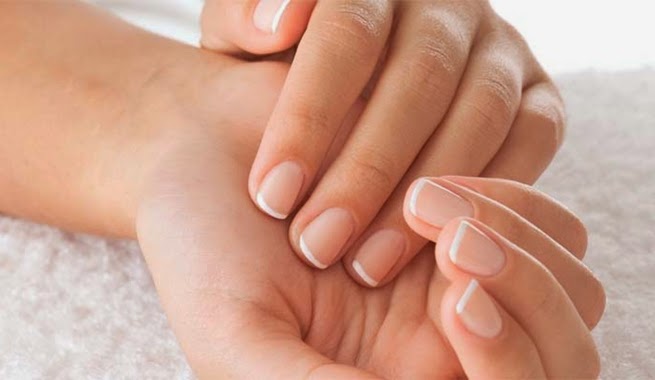To most people, nails and illness don’t really go hand in hand, but they do. Your nails can give valuable health warnings and signal the presence of a serious illness.

8 Health warnings your nails could be sending you
Take a good look at your nails. Look at the curves, ridges, valleys and grooves. Look at the thickness and if your nails are splintered or broken. Note the color of the nail itself, the skin underneath it, and the skin around the nail.
Now think about it – have your nails always looked this way? Changes to your nails are related to the appearance of illnesses, so anything new counts. With this new view, compare what you see with this list of eight possible health warnings in your nails.
1. Discolored nails
Your nails should be a pink color with a touch of pinkish-white crescents (lunula) near the base. If your nails are a pale color or striped with other colors, you could have a serious hidden health problem.
- Green nails are a sign of bacterial infection
- Red stripes on the nail bed are a warning sign of an infection of the heart valves
- Bluish nails are a sign of low levels of oxygen in the blood
- Pale nails mean a vitamin deficiency
- White nails may indicate liver damage, such as hepatitis
- Dark streaks in the upper part are associated with aging and congestive heart failure
2. Thick nails
Thick nails are not normal. You want your nails to be strong, but if they look more like claws than nails, watch out!
- Thickening of normal nails can indicate lung disease
- Thick and rough nails may be a sign of fungal infection
- Thick and separating nails may mean thyroid disease or psoriasis
- Unusual thickness can also be a symptom of a circulation problem
Thick nails are a change that should make you examine other symptoms that you might have been ignoring. Also be careful with allergic reactions to new medications that may suddenly cause thickening of the nails.
3. Splitting nails
Split nails are not just an occasional splintered nail or from slamming it in the door. Instead, these nails look like scales in layers. Don’t blame frequent hand washing or nail polish anymore, especially because:
- Split nails are the result of deficiencies of folic acid, vitamin C, and proteins
- Split nails combined with a nail base with holes may indicate psoriasis, which begins in the nails in 10% of cases
- Split nails may be the result of chronic malnutrition
Take care with what you eat and pay attention to symptoms of psoriasis; pay more attention to your health in general.
4. Concave (spoon-like)
Spoon-like nails are a sign of a series of internal problems. To be considered spoon-like, nails should be smooth and curved upwards, forming a bowl that is often large enough to hold water. Spoon-like nails are a sign of:
- Iron deficiency (anemia)
- Hemochromatosis, a liver disorder where the body absorbs too much iron
- Heart disease
- Hypothyroidism
The challenges in your nails and your health go hand in hand – for many people, solving their health problems will result in their spoon-like nails returning to normal.
5. Nails with holes
Small bumps or holes in the nails can be a result of hitting your hands – or they can be a sign that you need to look more closely at your health. Holes may indicate:
- Psoriasis
- Connective tissue disorder
- Alopecia areata, an autoimmune disorder that causes hair loss
- Zinc deficiency (when the wholes seem to form a line through the center of the nail)
Be careful with your hands so you know the difference between normal dents and bumps and real holes. The former will clear up quickly, but the holes related to illnesses will remain.
6. Ridges
Nails should have a smooth surface with almost imperceptible lines. Lines with obvious edges are a sign that something is happening with your body. Some of the most common conditions associated with lines or ridges are:
- Iron deficiency
- Inflammatory arthritis
- Lupus (red lines at the base of the nails)
Don’t ignore these lines – listen to their warnings.
7. Dry, brittle nails
They don’t need lotion or cuticle oil. If your nails are dry and brittle, you should check your hormone levels and bacterial health.
Thyroid disease leads to dry and brittle nails that crack and split easily.
Fungus may cause dry nails or brittle nails.
Thyroid disease, as well as fungus, takes time to be treated, so you won’t see a difference in the appearance of your nails until after a complete growth cycle.
8. “Watch glass” nails
If you have swollen skin that looks puffed up around the nail, or if your nails look like they were inflated around your fingers, this is what’s called “watch glass” nails or “drumstick fingers”. This can mean:
- Lung disease, especially if you already have breathing problems
- Inflammatory bowel disease
- Liver disease
Your nails are not the only signs of these diseases, but they can provide confirmation or motivated to seek medical attention.
Don’t ignore your hands or the health warnings that they send. Nails and illness are more related than you think – look at your nails frequently to protect your health.
